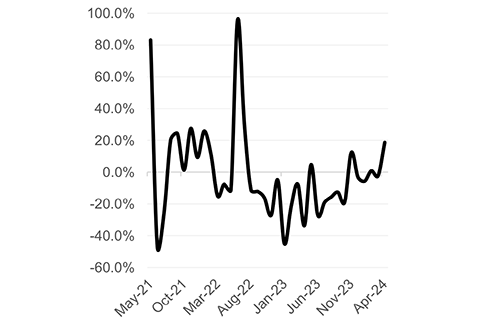Following a significant decline in building plan completions so far this year as compared to last year, the suffering local construction industry is hoping that substantial investment in infrastructure and related projects connected to the burgeoning oil and green hydrogen industries could serve as a lifeline.
The latest building statistics show that for the year-to-date, only 93 building projects have been completed in Windhoek, totalling N$126 million.
This reflects a significant slowdown in building plan completions compared to the same period in 2023, during which 198 new projects were completed between January and end of March.
This slowdown in completed projects spells doom for the local construction industry already reeling from increased international competition.
In its analysis of the figures, stock brokerage Simonis Storm (SS) noted that despite the lower number of completed projects in 2024, the collective value is higher. Also, in Swakopmund, only 64 building projects were completed for the year-to-date, with a total value of N$50.5 million. This contrasts with the 110 projects completed during the same period in 2023, amounting to a total value of N$78 million.
Commenting on the latest figures, the CEO of the Construction Industries Federation of Namibia (CIF), Bärbel Kirchner, stated a genuine increase in demand for building services can be anticipated.
“This should be expected in the Erongo region, considering increased mining activity. Investments in other sectors such as in oil and gas and green hydrogen, will most definitely stimulate building and construction activity in the future. In terms of the locality of building activity, that will be determined by the proximity of the large infrastructure projects in the pipeline. One naturally has to be mindful of the potential impact of our weather, i.e. drought and related water shortages,” Kirchner noted.
She added that Namibia’s loan-to-value ratio and related changes overall can have a positive impact on building activity overall. This is after the central bank relaxed the loan-to-value ratio requirement at the end of 2023.
“These were very significant, as mortgage loans for second residential property no longer require any deposit, while mortgage loans for third and subsequent residential properties only require a 10% deposit. However, whether this will make a big impact remains to be seen, as consumers are still likely to be risk-averse, considering current interest rates as well as inflation,” Kirchner said.
Meanwhile, industry experts in the industry have attributed the decline in completed projects to elevated interest rates.
In its report on the building statistics for April 2024, SS noted that at the beginning of 2023, the repo rate stood at a modest 6.75% in January, subsequently rising to 7% by March’s end.
“This relatively low rate facilitated accessible borrowing, leading many individuals to secure loans from banks for property construction and renovation. However, the current repo rate, now at 7.75%, has resulted in a decline in borrowing due to its heightened cost implications. In addition to high interest rates, other contributing factors include the soaring prices of building materials and plots, coupled with stricter lending policies,” SS stated.
The stock brokerage added that analysing private sector credit extension for mortgage loans during the first quarter of 2024 reveals significant challenges, as corporate mortgage loan growth averaged a concerning -2.8%, while mortgage loan growth within household debt instruments remained subdued at 2.0%.
SS further pointed out that most of the approved building plans in both Windhoek and Swakopmund predominantly focused on the residential segment of the market. In Windhoek, 76% of approved plans were for additions to existing buildings (150), 16% for new houses (32), and 6% for walls (11 projects). Only 1% each was allocated to commercial building plans and pools.
“Quarterly, Windhoek observed an increase in approved plans during the first quarter of 2024, with 465 approvals totalling a value of N$539.8 million as compared to 458 in the same period of 2023. Conversely, Swakopmund experienced a decline in approved building plans during the first quarter of 2024, with 132 approvals compared to 149 in the first quarter of 2023.


